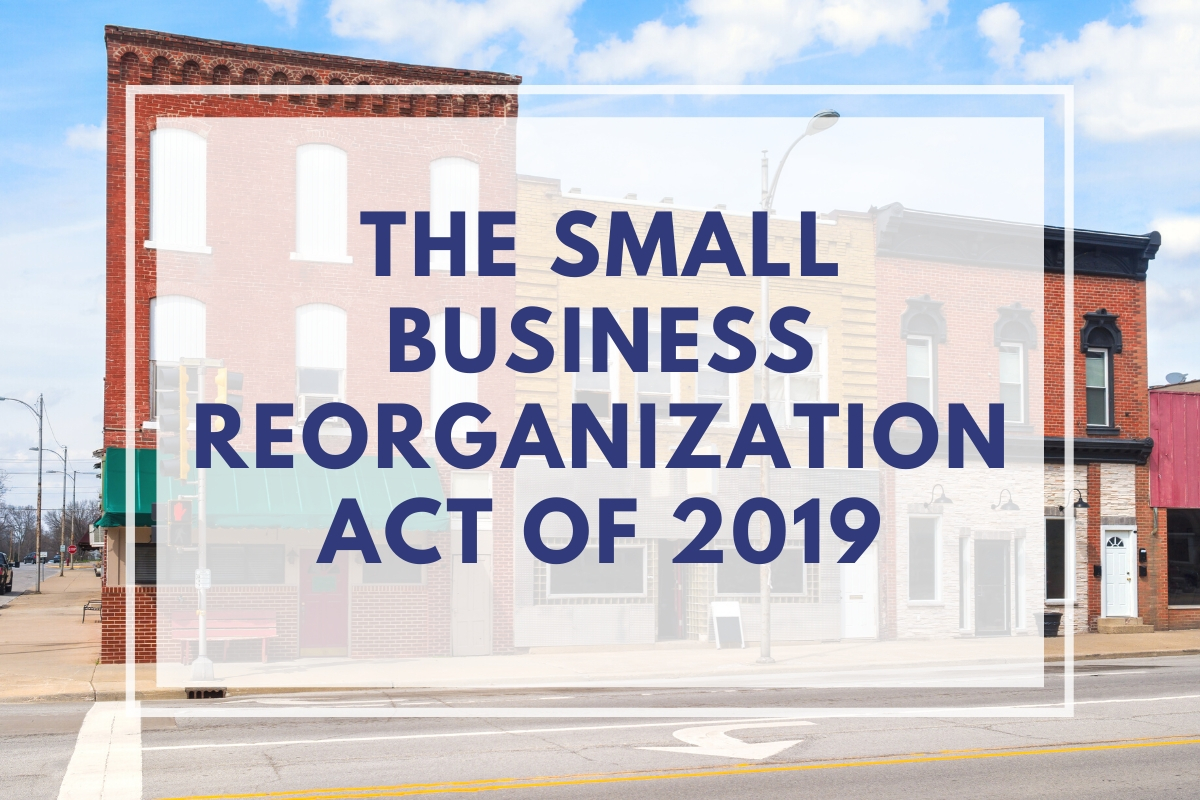Let’s Discuss Bankruptcy Reorganization for Small Businesses…Again

Let’s Discuss Bankruptcy Reorganization for Small Businesses…Again
In my February 2020 newsletter, I provided a brief explanation of The Small Business Reorganization Act of 2019, enacted on August 23, 2019, which added a new Subchapter V to Chapter 11 of the Bankruptcy Code. So why am I discussing the same topic just a few months later? Well, there are two reasons. First, the Act went into effect on February 19, 2020. So, there are some real world examples now. Second…and more importantly, a pandemic affecting nearly every nation on earth has hobbled the world economy and small businesses in particular. We’ve all witnessed chapter 11 reorganization filings by large retailers – J. Crew, JC Penney, Neiman Marcus, and most recently Brooks Brothers, to name a few. The nosedive in natural gas and oil prices has also triggered a number of producers and refineries to file for chapter 11 protection. Almost all of them expect to emerge from bankruptcy, albeit in a leaner form.
For a discussion of how Subchapter V works and differs from a typical chapter 11 reorganization process, check out my February newsletter here. It is not my intention to simply repeat it in this post. I do, however, wish to highlight a few benefits of Subchapter V that may be particularly valuable to small business owners during this precarious time.
As mentioned in the February newsletter, a small business must have no more than $2,725,625 in non-contingent liquidated secured and unsecured debt in order to qualify under Subchapter V of Chapter 11. Tucked into the CARES Act, which was signed into law in late March, was a provision increasing that limit to $7,500,000. This makes it possible for larger businesses to qualify under Subchapter V. It is important to note, however, that this increase is temporary and will expire one year after the CARES Act went into effect.
Although the provision of the Bankruptcy Code concerning leases has not been revised, its benefits are now more accessible to small businesses via Subchapter V. Under Section 365 of the Bankruptcy Code, a debtor has the option of assuming or rejecting its unexpired leases. For a retailer, bar or restaurant with one or more physical locations, the ability to reject, i.e. terminate, a lease or leases that are oppressively expensive could mean the difference between survival and cessation of operations. Even if you choose not to immediately reject a lease, you normally have 60 days to do so. This gives you leverage to possibly rewrite the terms of the lease or enter into a new lease with your current landlord on more favorable terms.
One extremely important difference between Subchapter V and the “normal” chapter 11 process is the limitation on who may propose a plan of reorganization. Under Subchapter V, only the debtor may submit a plan of reorganization. This means that a debtor does not need to worry about a creditor hijacking their bankruptcy process by proposing a plan that would benefit the creditors at the expense of the debtor.
Another important distinction is that subchapter V does not allow the creation of an unsecured creditors committee. Normally, unsecured creditors can vote on forming a committee to protect their interests through the bankruptcy process. They often create thorns in the sides of debtors. They are also paid out of the bankruptcy estate, i.e. the debtor’s money. Subchapter V prevents the creation of these committees.
Perhaps most importantly, it is possible to get a reorganization plan approved via a “cram down”. Essentially, a plan of reorganization may be approved without the approval of any creditor class. There still exist a number of requirements that need to be met to accomplish this feat, but it improves the chances of reorganization. Furthermore, a disclosure statement is not required under Subchapter V. A disclosure statement explains the plan of reorganization and is often two to three times longer than the plan itself. It is a significant cost factor, often the most expensive single part of the reorganization process. Not having to prepare one reduces the cost of reorganization.
There are more advantages, but also traps for the unwary in the reorganization process. For example, an individual may take advantage of Subchapter V, provided s/he is a business owner. For an in-depth discussion on the subject and to determine if Subchapter V may be right for you or your business, please contact Moretsky Law.
To begin a discussion about your estate plan and available options, feel free to contact Moretsky Law for a confidential consultation at 215-344-8343.



